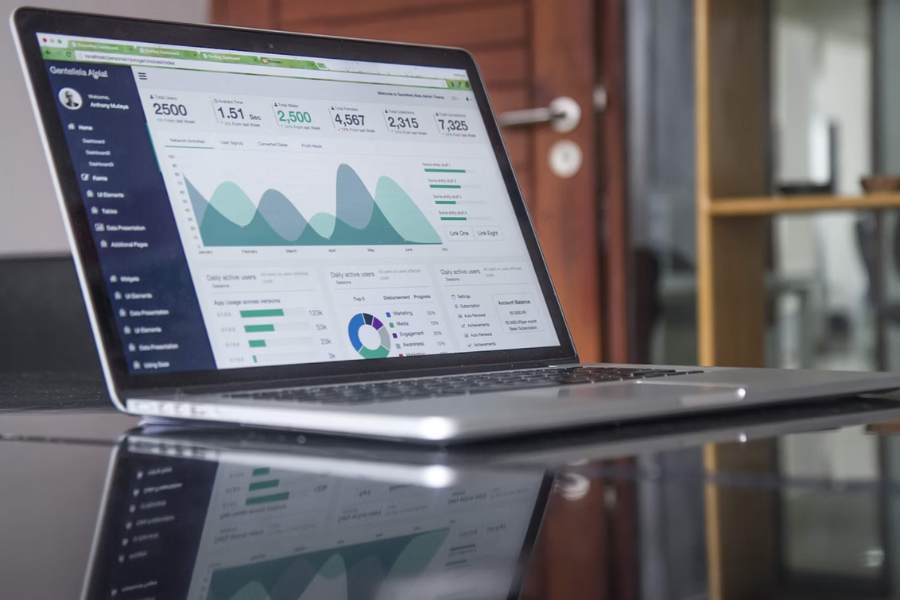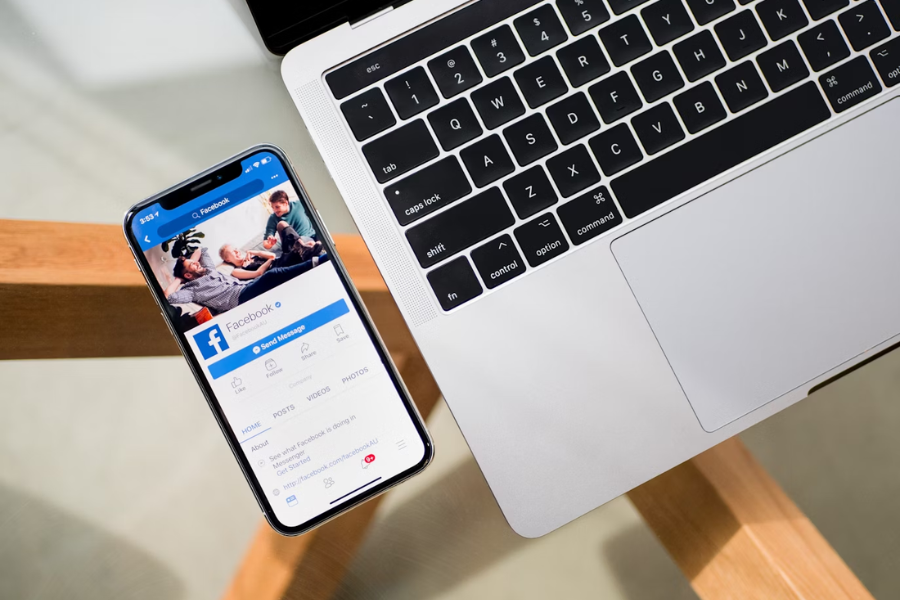Pay-per-click (PPC) marketing can seem overwhelming if you are just getting started. Things can, however, get easier when you begin to learn how pay-per-click advertising works.
The misconception is that many people consider advertising as an expense, not knowing that it can also serve as a great source of revenue. In fact, utilizing ads correctly is one of the best ways to make money online.
If you want to make money with pay-per-click PPC advertising, then this article is just what you need. Before we get into that, however, let us consider what it is and how it works.

Source: Unsplash
Introduction to Pay-Per-Click Advertising
What is PPC? Pay-per-click advertising is a digital advertising model that requires the advertiser to pay a fee each time someone clicks on their ads. It is usually regarded as one of the most cost-effective forms of advertising because you only pay for the number of people who click on your ads.
In other words, you’re buying visits to your website’s landing page as opposed to gaining organic visits. While organic traffic is preferable, it may take longer. That’s why advertising helps improve the visibility of your new online store.
With PPC, the cost per click (CPC) is largely inconsequential because the click is usually worth more than what you pay for it. For example, a click that costs 1,000 NGN can result in the sale of a product worth 150,000 NGN.
Because the results justify the cost, PPC has become the norm. Today, it is the main monetization channel of digital ad giants such as Google, Microsoft, and Facebook.

Source: Unsplash
Choosing the Right Platform
Now that you understand PPC advertising, the next step is to pick the right platform for you. Let’s examine the main advertising platforms you can use.
Google Ads
Google Ads is an excellent platform that is easy to set up and navigate, making it good for both beginners and people with experience. It is the biggest platform for online ads.
Pros
- Quite user-friendly;
- Works very well in Nigeria;
- You can automate Google’s bidding on keywords within your budget;
- With over 8 billion searches every day, Google has the broadest reach;
- You control your campaigns and can take out poor-performing keywords;
- Budget-friendly and is available to businesses of all sizes;
- Easy to track conversions with simple coding;
- You can target customers in certain countries, regions, and cities;
- New features are constantly introduced.
Cons
- With more competition come higher-priced keywords;
- It is easy to get started but more challenging to master. You need good skills to run effective campaigns;
- Users can easily counter your ads with ad blocker plugins.
To sum up, Google Ads is likely the most useful platform. But for the same reason, it’s also highly competitive, and perfecting your strategies requires more skill and planning.
Bing Ads (Microsoft Ads)
Now known as Microsoft Ads, this platform is one of the most popular in the market. It is far-reaching, providing access to diverse internet audiences. It might just be the search engine ads platform that you need.
Pros:
- Gives you a lot of campaign control over language, location, and scheduling;
- Has an additional Social Extensions app that’s helpful for driving traffic to your social media;
- You can monitor your campaign with a wide range of analytics;
- Your ads are likely to appear at the top of search engine results pages;
- Access to users through Microsoft’s digital assistant Cortana;
- Has an older user demographic, which is getting harder and harder to target today.
Cons:
- Google has a better click-through rate;
- A lower reach than Google;
- A much smaller reach to the under-35-year-old demographic.
Bing Ads is a suitable complement to Google Ads, especially if you need to target older customers. However, its limited reach does not make it a viable alternative to Google altogether.
Social Media Advertising (Facebook, Instagram, Twitter, etc.)

Source: Unsplash
Social media advertising is proving to be a powerful tool in the PPC ads space, especially in recent years. You can reach millions of users across various social media platforms. If you use socials right, you will get a lot of conversions that will result in increased revenue.
Pros:
- Easy to use across platforms;
- Easier to choose a target audience as each social media platform has something that makes it unique;
- Very popular in Nigeria;
- High visibility across platforms;
- You can control your campaign.
Cons:
- Although some networks are cheap, other platforms like LinkedIn can be expensive;
- The effectiveness varies from one platform to the next.
Advertising on social media is accessible and diverse, but that also means your results can vary quite a bit. The sheer diversity of platforms necessitates in-depth analysis to determine which networks best match your target audience.
Creating Effective Ad Campaigns
One of the most popular ways of making money with pay-per-click ads is to drive traffic to your business. Therefore, to achieve this, your ad campaigns must be effective. There are certain things to look out for to create an effective ad campaign:
- Identify your target audience;
- Your ad must be memorable;
- It has to resonate with the target audience by delivering a personal and meaningful message;
- It has to be unique to the brand so it does not get misattributed to a competitor.
We will briefly consider some of these points in detail below.

Source: Unsplash
Defining Your Target Audience
Defining your target audience is the first step in creating an effective ad campaign. Doing this will help you focus on your ideal customers or client base, which in turn will help you make the most of your ads.
The question now is, how do you achieve this?
- You need to first ask yourself what the aim of your product or service is. What problem are you trying to provide a solution for?
- The next step is defining the personas of those your product or services will help. A suggestion of criteria to help you with this includes age, gender, geolocation, interests, profession, financial status, etc. You can collect audience data with online tools to better identify segments within it.
- After you have clearly defined your audience, you need to consider whether it will be willing or able to pay for your product or service. If you are unsure, revise your offer or the target audience until it’s a good fit.
Once you have identified your target market, you can move on to the next steps.
Crafting Compelling Ad Copy and Headlines
After sorting out your target audience and goals, the next step is to create your campaign. This stage is very important as uninspiring ad copy and bland headlines can hurt your campaign. People come into contact with so many ads each day, so they scan things as they can’t read everything. That is why you must grab and keep their attention using an effective headline.
While it may not be easy to come up with original campaign ideas or headlines constantly, you can always strive to improve on your imagination. One way to do this is by looking at what your competitors are doing right with their campaigns.
Inspecting the performing campaigns of industry leaders will give you a good idea of what may interest your audience. This is not to say you should copy their work. You should instead use it as an inspiration for your campaign. Make yours unique by adding your creative touch, voice, and value proposition.
Designing Eye-catching Ads
People are not always interested in reading everything in an ad copy. This is why you need to appeal to their visual interest by using captivating designs in your ads. High-quality pictures and eye-catching graphic designs that tell your brand’s story can add value to your ad copy. This will help attract interest to your ad.
Setting a Budget
A PPC budget is the amount of money you need to execute an online advertising campaign. Allocating money to your campaigns can help you achieve your specific performance goals.

Source: Unsplash
To get the most out of your budget, you need to understand cost-per-click strategies, learn how to set the budget, and also know when to make adjustments. We will consider these various aspects of budget management below.
Understanding Cost per Click and Bid Strategies
Cost-per-click (CPC) is a payment model that allows businesses to pay for their ad placements based on the number of clicks received. It is essentially the cost of placing ads on various advertising mediums, including search result ads, banner ads, and social media promotions.
Understanding how CPC advertising works and calculating the precise cost per click can help you predict traffic, evaluate ad effectiveness, and understand the overall return on ad investment (ROAS).
In most cases, you have to bid on your ads. You will have to choose between manual bidding and automatic bidding. For manual bidding, you set your pricing to suit your budget. It also allows you to set separate bids for stand-alone keywords.
In automatic bidding, your ad platform sets your bids for you. It is an excellent choice if you are unsure of the most profitable keywords. The automatic bid is designed to get the most clicks within your budget.
Determining Your Advertising Budget
Although every business has its own peculiarity, there are some steps you can take to help you find the right estimate for your budget.
- Identify the best keywords for your marketing objectives: Focusing on keywords with an immediate purchase intent is best. High-intent keywords are likely to result in purchases. Tools such as Google’s keyword planner can help you organize things.
- Do the math: Using information from your keyword planner report, multiply the average monthly searches of all relevant keywords by a targeted search ads impression share (e.g., 50%). This gives you a possible number of impressions.
Next, multiply these impressions by your expected click-through rate (CTR) to get your potential volume of clicks. To calculate your budget, multiply your potential volume of clicks by the average CPC obtained from the keyword planner report.
This is what your formula should look like:
The potential volume of clicks x The average CPC = Potential budget.
- The general rule: Your advertising budget should be 15-20% of your marketing budget. The marketing budget should be between seven to eight percent of your annual revenue.
Monitoring and Adjusting Your Budget Over Time
Monitoring and being flexible with your budgeting allows you to respond quickly when there are changes in the marketplace. You can also embrace new opportunities faster and tackle problems. Flexibility can positively impact the success of PPC campaigns.
For example, you could decide to focus more on an advertising platform if it is generating more sales for you.
Tracking and Measuring Your Results
You need to track and measure your results to evaluate the success of the ad campaign. Without this data, you may be left in the dark as to whether you’re wasting your time or doing the right thing.

Source: Unsplash
Understanding Key Performance Metrics (KPIs)
Key performance indicators (KPIs) are an excellent way to track and measure your pay-per-click marketing results to determine your success level. For efficiency, KPIs should be measurable, specific, and time-bound. They should also be achievable and relevant.
Important KPIs to look out for in marketing campaigns include:
- Number of leads generated
- Number of sales made
- Conversion rate
- Website traffic
- Engagement rate
- Social media reach
It’s crucial to track KPIs because it gives you insight into both the short-term and long-term performances of your campaign. This enables you to make the necessary changes as needed.
Setting Conversion Goals and Tracking Conversions
Conversion tracking is when a brand monitors the actions of its consumers towards its products. Setting conversion goals is a good way to know if your ad campaign is doing well or not, allowing for optimization in the future. When you set a conversion rate as one of your KPIs, you can track the conversions from your ad campaign.
Analyzing Data and Making Data-Driven Decisions
When you analyze data, you gain insight into what works and what does not for your campaign. This, in turn, will lead you to make data-driven decisions, such as dropping inefficient marketing activities.
There are various ways to track and measure results for your analysis. These include analytic tools like Google Analytics to track website conversions, surveys, and customer feedback, as well as personal tracking of your sales data.
If you discover that your marketing efforts are not yielding results, you can then work on your strategy to devise improvements.
Optimizing Your Campaigns
Campaign optimization is a continuous process that refines and improves campaign strategies to achieve the best return on investment. To achieve this, you analyze and leverage data and then make important improvements based on the insights obtained. This will enable you to reach your target audience and meet KPIs.
Testing and Tweaking Ad Copy and Design
One way to optimize your campaign is to test and tweak your ad copy and design continually. You can do this by making different variations and then carrying out an A/B test to determine what will work best. Also, you can conduct surveys to determine what designs your audience prefers to see.
Adjusting Bid Strategies and Budget Allocation
Bidding and budget optimization play a strategic role in getting maximum results from your ad campaign. When you manage your bids and budgets effectively, you will optimize your ad spend while also improving your return on investment (ROI).
It is advisable to start with manual bidding so you can control your bids and learn how different bids can impact your campaign. Bid adjustments allow you to finetune your bids to meet specific goals.
For example, you can increase bids for certain segments, like locations or high-performing keywords, or decrease bids for low-performing keywords.
Improving Landing Pages and User Experience
Landing page optimization involves improving the web page design and layout. The goal is to increase conversions and elevate user experience (UX), turning more visitors into loyal customers.
An optimized landing page contains all the relevant information along with a good design and ease of navigation to boost functionality.
Landing pages are an integral component of a successful online business and must always be improved.
Monetizing Your Ads
There are various ways to monetize your ads online. These include affiliate marketing, deciding to sell your own products or services, and display advertising and AdSense. We will discuss each of these methods briefly below.

Source: Unsplash
Affiliate Marketing
Affiliate marketing involves recruiting individuals (influencers) to advertise your products in exchange for affiliate commission fees. They receive a payment when a user completes a target action, such as signing up or purchasing a product.
Many platforms that offer affiliate programs usually pay between 20-40 percent of your affiliate’s subscription payments. Certain websites, however, pay a fixed price for each trial activation or sale. Depending on the affiliate terms, payments could be recurring or paid once.
An advantage of affiliate marketing is that you do not have to invest any money. You just have to sign up on a platform to begin. It can also serve as a means of passive income, especially if the payment is recurring.
As an online business owner, setting up an affiliate link can help you make money. As your affiliates help you bring in more users, your revenue will also see an increase.
Selling Your Own Products or Services
You can monetize your ads by selling your own products and services and then running an ad campaign. An ad campaign will make your page pop up in search engines. As people click on your ads to come to your page, any conversion you make is likely to be worth more than the cost of the click.
Although this depends on the product or service on offer, in most cases, the cost of a click is usually much smaller than what the product or service costs. If you create a catchy ad copy with an eye-pleasing design you are likely to turn your clicks into conversions. This means more sales and money for you.
Display Advertising and AdSense
Display advertising and Adsense are among the most popular ways of making money online via PPC. It works by a website hosting advertisements to earn a small fee for each click or impression the ad receives. The ads are usually banners.
Websites that host ads are usually blogs, online magazines, or other content-based publishers. Many business services and e-commerce stores choose not to host display ads to avoid looking unprofessional. In most cases, they instead feature affiliate links for partners.
Google Adsense is one of the biggest platforms to register with if you want to run ads on your site. However, it is not easy for first-timers to register, as the platform has some strict rules.
Scaling Your Campaigns
The scaling of successful campaigns is important for businesses that are planning an expansion. There is more to scaling than just improving your budget. It also involves a strategic approach to ensure that the success recorded in previous campaigns can be replicated on a bigger scale.
Below, we will consider a few of the ways you can scale a PPC campaign.

Source: Unsplash
Expanding Your Target Audience
Have you ever thought of expanding your target audience? If you haven’t, you should. Testing new waters is a great idea as it can help you gain more conversions. This will ultimately boost your revenue.
You need to be careful, though, so that your ad budget does not go to waste. Research your intended audience to identify how well they align with your brand’s products or services.
Carry out tests on various segments of the new target audience to find out the best combination that will not affect your ROI. A careful approach will see you achieve your aim of expanding into new territories. It will, in turn, make your business more profitable.
Launching New Campaigns and Ad Groups
As you plan to scale your PPC campaigns, you may want to launch new campaigns to advertise several more products and services your business offers. The problem is that you may not be able to group all these ads together. This can complicate things for you when you want to track and measure your campaign’s ROI.
Therefore, it is better to put them in separate groups. Separating them is even more important if the products are similar.
When you put different products in their individual ad groups, it becomes easier to target hyper-specific keywords. You can then reach your target audience easily due to keyword-rich ad copy.
Diversifying Your Advertising Platforms
You may be used to platforms like Google Ads, Microsoft Ads, and Facebook Ads. However, you can try out new tools, such as Amazon Ads, Instagram, Reddit, or Quora. Other platforms, apart from Google ads, can work for your PPC marketing.
If you are scaling your marketing strategy, it may be a good idea to try out new avenues.
Do you run an ecommerce brand? Then Amazon Ads could be an excellent choice. Running ads on the platform could prevent your Amazon product page from getting lost in the sea of options. It is an excellent way to stay ahead of the competition.
If video advertising suits your audience, YouTube Ads might be perfect for you. A short, captivating video could help you boost your reach. LinkedIn is another excellent platform you can try, as you will find many businesses with big budgets there.
Conclusion: Final Thoughts
Making money with pay-per-click advertising requires strategy. Some important steps to take include identifying your target keywords and audience. Also, you need to refine your campaign constantly. The tips and techniques in this article will help you improve your PPC advertising skills.
FAQs
Can I Make Money With Pay-per-Click Ads?
Yes, PPC ads are a good way to make money online. You can drive traffic to your website with Google Ads and other options. Thousands of businesses and individuals worldwide are making money with PPC ads.
Which Website Pays for Clicks?
A popular website is Google Adsense. This platform is suitable because it has multiple advertisers, is easy to use, and also grants you fair control over ads.
How Do I Get Good at PPC?
You can become proficient at PPC by removing low-performing keywords, optimizing your PPC bids with manual bidding, and experimenting with new ad copies.